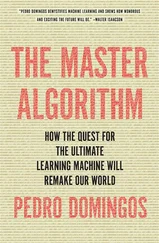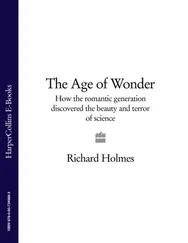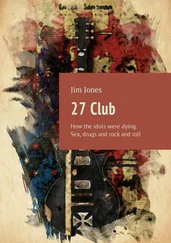Half a century later, magazines were still reprinting these rumours, and creating new ones: ‘Williams was so notorious an infamous man, for all his oily and snaky duplicity, that the captain of his vessel, the Roxburgh Castle, had always predicted that. he would mount the gibbet.’ This comes from All the Year Round, Charles Dickens’ magazine, and Dickens was evidently fascinated by Williams, and in no doubt about his guilt. As well as commissioning this article, he owned an illustration of ‘the horrible creature’, and had also touched lightly on the subject in Dombey and Son (1847–48): when Captain Cuttle, who lives down by the docks, keeps his shutters closed one day, the neighbours speculate ‘that he lay murdered with a hammer, on the stairs’.
Meanwhile, the authorities had to decide how to respond to Williams’ death. Most immediately, they needed to show the local residents that he would not escape justice by his suicide. It would be another century before a British judge decreed that it is ‘of fundamental importance that justice should not only be done, but should manifestly and undoubtedly be seen to be done’, but the idea was already well understood. So on the last day of 1811, an inclined wooden platform was placed atop a high cart. Williams’ body was laid out on this, dressed in a clean white shirt (frilled, say some sources), blue trousers and brown stockings: in other words, in the neat, clean dress of a labouring man, although without a neck-handkerchief or hat, marks of decency and respectability. His right leg was manacled, as it would have been when he was in gaol. The maul was placed on one side of his head, the ripping chisel on the other.
At ten o’clock, a macabre and unprecedented procession set off at a stately walking pace. The head constable led the way, followed by
Several hundred constables, with their staves …
The newly-formed Patrole [sic], with drawn cutlasses.
Another body of Constables.
Parish Officers of St. George’s and St. Paul’s, and Shadwell, on horseback.
Peace Officers, on horseback, Constables.
The High Constable of the county of Middlesex, on horseback
THE BODY OF WILLIAMS …
A strong body of Constables brought up the rear.
Crowds lined the route; more watched from windows and even the rooftops. Shops were shut, blinds drawn as a mark of respect to the Marrs and the Williamsons. The cart travelled first to the Ratcliffe Highway, where it stood for a quarter of an hour outside the Marrs’ house. An enraged member of the public climbed onto the cart and forcibly turned Williams’ head towards the house, to ensure that the murderer was brought face to face with the scene of his crime. Then the procession travelled on to New Gravel Lane, where again the cart rested outside the death site. Finally it processed to Cannon Street, on the edge of the City, and paused again. Then a stake was driven through Williams’ heart (some reports say hammered home by the fatal maul), and his body was tumbled into a grave – some sources say a large one, so he could be tossed in; others that it was purposely made too small and shallow. Either way, the intention was to show deliberate disrespect. The crowd, which had so far watched in almost total silence, howled to see the last of the man who had killed seven people – half as many as had been murdered in the entire previous year throughout England and Wales.
This was not the last the world was to see of John Williams. Bodily, he reappeared in 1886, when workmen laying a gas pipe in what was now the heart of the City dug up a skeleton with a stake through its heart. Rumour later had it that at some point Williams’ skull appeared in the keeping of the publican ‘at the corner of Cable Street and Cannon Street Road’. In 1886 the Pall Mall Gazette further reported that Madame Tussaud’s waxworks had a ‘beautifully executed’ portrait of Williams, drawn from life by Sir Thomas Lawrence. But when precisely had Lawrence seen Williams? In the two days between his arrest and suicide? Or perhaps in his final, cart-top appearance?
Williams was to cast a longer shadow on the mental attitudes to crime and crime prevention in the nineteenth century than his skeletal remains could do physically. His ghost made several appearances in Parliament in the months that followed his death. The government was slower than the public to embrace the solution of Williams as the sole murderer. In a debate, the radical MP William Smith simply assumed that the crimes had been committed by ‘a gang of villains, of whom few or no traces had yet been discovered’. The Prime Minister, Spencer Perceval, agreed with him. *The case ‘was still wrapped up in mystery. It undoubtedly seemed strange that a single individual could commit such accumulated violence.’
It was not the mystery that troubled the politicians; it was that policing throughout London was now seen to be completely inadequate. The city was still eighteen years away from establishing a centralized police force, and relied on a patchwork of overlapping organizations that had developed independently. By 1780 there were 800,000 inhabitants living in London’s two hundred parishes, which were responsible for the watch and policing, and also for lighting, waste disposal, street maintenance and care of the poor. But nothing was straightforward: Lambeth parish had nine trusts responsible for street lighting, St Pancras eighteen for paving; by 1800 there were fifty London trusts charged with maintaining the turnpike roads alone. In 1790, a thousand parish watchmen and constables were employed by seventy separate trusts. And even twenty years before that, in a city that was then much smaller, Sir John Fielding, the famous Bow Street magistrate, had warned Parliament that ‘the Watch. is in every Parish under the Direction of a separate Commission’, which left ‘the Frontiers of each Parish in a confused State, for that where one side of a street lies in one Parish, the Watchmen of one Side cannot lend any Assistance to [a] Person on the other Side, other than as a private Person, except in cases of Felony’.
In 1792, in a preliminary attempt to rationalize this motley collection of responsibilities, the Middlesex Justice Bill was passed, creating seven metropolitan police offices, each to be staffed by three magistrates and six constables, with at least one magistrate in each of the offices having legal qualifications (previously magistrates had simply been men of a certain status and level of wealth). In 1798 a privately funded force was set up to police the river and docks, paid for by the local West Indies merchants. In 1800 this force was taken over by the magistrates, and named the Thames River Police, with its own magistrate, Patrick Colquhoun.
By the end of the eighteenth century, with the population of London approaching a million, crime prevention was the responsibility of fifty constables and eight Runners at Bow Street magistrates’ court and the seven police offices, plus a thousand additional constables and two night-time Bow Street patrols of 122 men. There were also 2,000 parish watchmen, who covered the 8,000 streets of London after dark. Some indication of the attitudes towards these two groups of men can be seen from their pay. The Bow Street patrols were paid between 17s.6d. and 28s. a week; by contrast, many watchmen received a beggarly 4s.11d. Colquhoun commented on the contempt that was shown these forces: ‘It is an honourable profession to repel by force the enemies of the state. Why should it not be equally so to resist and to conquer these domestic invaders of property, and destroyers of lives who are constantly in a state of criminal warfare?’
The answer was that this ‘honourable profession’ was shrouded in mystery, and what people did know of it, they despised, the prevailing mental image being not a law-enforcer, but more a law-breaker: the eighteenth-century thief-taker, the criminal turncoat. That was about to change, partly through the publication of the memoirs of the French detective Eugène Vidocq (1775–1857). Vidocq had started his career as a not terribly successful criminal. After a number of convictions, he became a police spy, or informer, working secretly for the government while still in prison. In 1811 he was one of four ex-convicts to be made a detective, and in 1812 he became the head of the newly created Brigade de Sûreté, with thirty men under his command. None of this would have been of more than passing interest in Britain, had it not been for his Mémoires, which in translation swiftly became a best-seller.
Читать дальше












